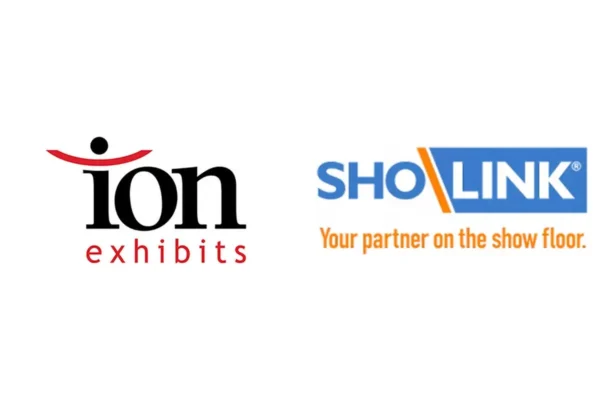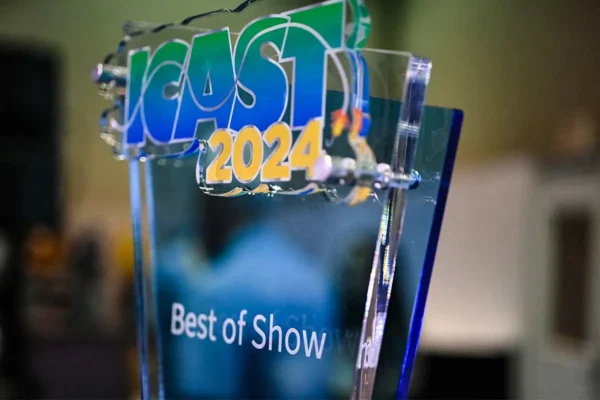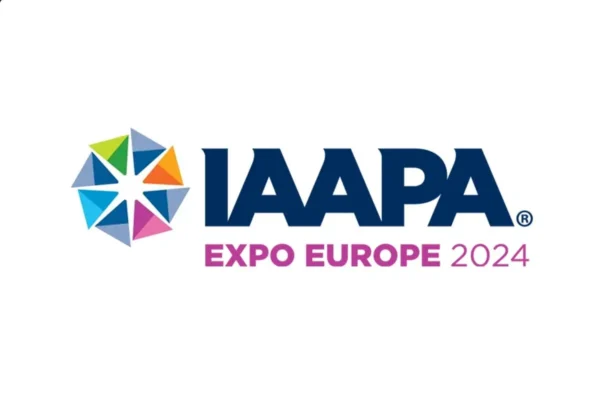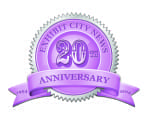 For companies exhibiting for the first time, the concept of building an exhibit could be like putting together a jigsaw puzzle in which the exhibit house or supplier is more knowledgeable about how it will take shape.
For companies exhibiting for the first time, the concept of building an exhibit could be like putting together a jigsaw puzzle in which the exhibit house or supplier is more knowledgeable about how it will take shape.
Like anyone working on a puzzle, exhibitors want to be involved in choosing the right pieces for their exhibit, no matter how frustrating the process could be. Some exhibitors may have more knowledge than others but cannot yet see the big picture their exhibit is destined to become. Either with the help of their exhibit design firm or by educating themselves, exhibitors can learn more about changes in exhibit material over the years and how to choose items to suit them.
Material offerings found over 20 years have expanded and diversified to complement the brands, budgets and beliefs of exhibitors. This allows exhibit houses and suppliers to better serve clients who may want to build their booths cost-effectively or sustainably, and serve others who may view money as no object in their quest to stand out at tradeshows.
I. TYPES OF EXHIBITS
Tension fabric structures
Exhibitors wanting to save money are no longer limited to wood or hard-panel exhibits with tension fabric structures continuing to gain traction.
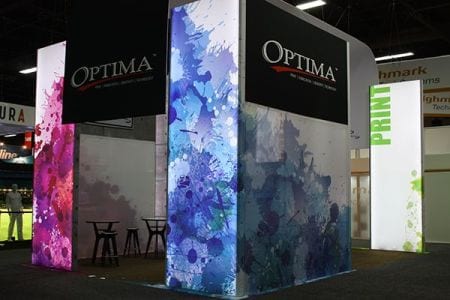
“You can take a tension fabric exhibit and pack it in half the space on a truck than a wood or hard-panel exhibit. You’re paying less for trucking. You’re putting more on that truck, so there are less trucks on the road. You’re paying less in drayage to the weight. Tension fabric weighs a lot less than a hard-panel exhibit,” explained Tom Bowman, CEO and founder, Bowman Change, Inc.
The materials comprising tension fabric structures are inherently lightweight. Using aluminum extrusions to connect the structure, tension fabric elements can take up all four walls of the exhibit, something Optima Graphics showed off firsthand in its 20 x 30 fabricated booth at EXHIBITOR2014 in Las Vegas.
“In a 20 x 30 booth, drayage is minimal. In the past, it could have been tens of thousands of dollars. It’s hard to quantify, but I know it’s a big selling point,” explained Mark Nardoni, account executive, Optima Graphics. “Fabric is much lighter than plywood and laminate. People used to build things like cabinet structures. Now the goal is to make [the exhibit] lightweight and useful and have graphic elements on it. All those factors have driven us to where we are in the industry.”
The demand for all types of fabric is allowing many exhibit houses and printing companies to thrive.
“Large-scale fabric printing is really big in our industry right now. We probably have more equipment dedicated to large fabric printing,” Nardoni added. “We’re also big in the graphic systems structure business. We do tension fabric structures. Our niche is printing, but the way we have been able to grow as a company is by offering graphic systems to add value. We’re considered one of the best at what we do, which is printing on fabric, but a lot of our business comes because we have these ways to display it and for people to utilize it without having a lot of resources themselves.”
Fabric is also a major product for Color Reflections Las Vegas, a digital printing company.
President Joseph J. Castellano cited the lightness, beauty and machine-washable qualities of fabric attracting customers.
Custom hard-panel exhibits
Just because many exhibitors love the lightness of fabric and aluminum, it doesn’t mean heavier products like wood and steel have become obsolete.
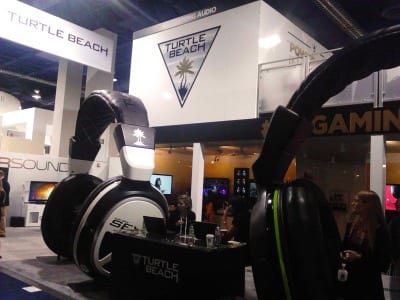
At large-scale tradeshows like International CES, custom, hard-panel double-deck exhibits continue to be a way for exhibitors to set themselves apart in tight spaces. It’s no wonder why Turtle Beach, a sound card and headset manufacturer, went with a hard-panel, double-deck structure designed by experiential marketing firm Ignited.
Allowing Turtle Beach’s employees to operate as if they were inside their company’s headquarters, the double-deck structure featured a café and conference space while giving the company visibility amongst a sea of other double-deck structures as well as numerous smaller exhibits at 2014 International CES.
“Building up seems to be common. At CES, last year, there weren’t [many] double-deck structures. It’s starting to become a common theme as space gets tighter,” explained David Lock, senior project manager of experiential marketing, Ignited.
To fulfill their goals, some exhibitors are willing to expand their transportation budget, pay more drayage fees and hire extra labor to bring in steel girders to strengthen the hard-panel materials used to create these double-deck structures.
Custom modular aluminum systems
For exhibitors that are on a tight budget, wood and steel may not be an option. Perhaps, a tension fabric structure doesn’t complement the look they’re trying to achieve.

Photo Credit: Highmark TechSystems
Custom modular aluminum systems are another alternative. They are lightweight yet can become large double decks. Modular aluminum double decks offer the same amount of space, weight load and privacy as their wood and steel competitors.
The multi-configurable nature of a modular system ensures the structure will complement its assigned show floor space, and it could be modified for reuse.
“Customers do re-use systems because they’re proven winners. Certainly the design is tweaked from year to year, but ultimately, if the end-user is pleased with the capabilities and functionality, it’s a win-win. From all aspects, the designers are comfortable using the system; the sales people are comfortable; [and] the setup crews know the system. Ultimately, the end-user has what they want,” stated Matt Andrews, vice president of sales – Western Territory, Highmark TechSystems.
Additionally, the aluminum’s lightness and ease of use could ensure a smooth set up for hired labor. Plus using these structures could save on drayage and transportation.
Commonly seen as a European product, modular aluminum systems can be engineered in the U.S. from companies like Highmark TechSystems. This means U.S. exhibitors can purchase or rent made-in-America products from exhibit houses using Highmark as a vendor.
II. GOING GREEN
Printing
Whether it’s a tension fabric structure, modular aluminum system or customized hard-panel exhibit, both utilize graphics for branding purposes. In existence for more than 30 years, Optima Graphics saw firsthand how graphics printing changed.
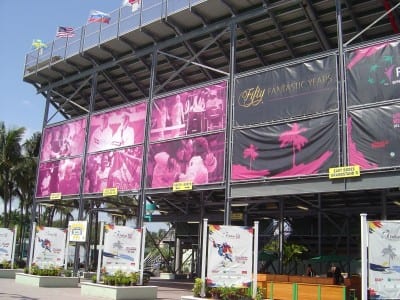
“For large-format printing, there was only a few ways to do it before digital technology. You could print it photographically with a Lambda. The advent of wide-format digital printers changed that niche. Now there is UV direct print. In the past, you had to print to media that had to be applied to a substrate and then laminated,” explained Nardoni.
Not only has the material printing process changed over the years but so has the materials themselves. There are now many sustainable options, such as water-based inks rather than oil as well as biodegradable substrates – the panels to which graphics are glued.
“For years, we used Sintra [substrate], which is PVC [polyvinyl chloride]. It’s the same stuff as plumbing pipes. It doesn’t biodegrade; it’s made out of oil. It stays in the landfill for 100 years. People tend to use it once and throw it away,” said Bowman.
Carpet
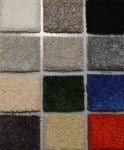
Out of all the flooring options, carpet is very popular due to its quick installation, but it’s also one of the many things thrown away after a tradeshow.
Many suppliers offer options made with recyclable material that is about the same price as non-recycled carpet.
“Almost every carpet mill now sells carpets that have a lot of recyclable material. Recycling carpet gives them material to work with. There is now carpet on the market made from recycled soda bottles called Polyethylene Terephthalate (PET). According to the National Park Service, which did the study on it, it lasts longer, and it takes color more vibrantly- if you want vibrant color,” added Bowman.
LEDs
For exhibitors looking for more sustainable options for their exhibit, they don’t have to look too hard to find LEDs. Over the years, LED usage has grown so much that the use of incandescent or fluorescent lighting in exhibits has lessened.
“You can use LEDs for everything. They don’t break, and they hardly use any electricity. They don’t ever get hot. They don’t waste any energy. They are a fraction of incandescents, and they use a whole lot less energy than fluorescents. LEDs are not as fragile as fluorescents,” explained Bowman. “The lighting companies and exhibit houses that have looked at LEDs are only buying fluorescent tubes for light boxes when that is already what the client owns and they have to replace them. For everything new, they are using LED. In the long run, it’s cheaper, and the light quality is wonderful.”
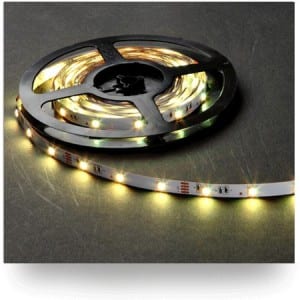
Along with fixing problems intrinsically linked with using incandescent or fluorescent lighting, LEDs are usually pre-included in many lighting products offered by suppliers. For instance, Optima Graphics does lighting in-house, providing panoramic light boxes in which LEDs are built into the frame.
Other than lighting, LEDs are associated with much of the major technologies seen at tradeshows, such as monitors, televisions and interactive walls.
“Some of the state-of-the-art technologies being used at big events include flexible LED walls, iPads, holograms, mobile applications and gesture technologies,” said Andrew Taffin, CEO, Tallen Technology Rentals. “Flexible LED walls include the Giami, flexible LED tiles and the NEC X551UN Professional Display.”
The widespread usage of LEDs and other newer exhibit materials didn’t necessarily mean out with the old and in with the new. Instead more available material allows exhibitors to successfully connect their exhibit to how they operate outside tradeshows or use exhibit material that is an extension or representation of themselves.











